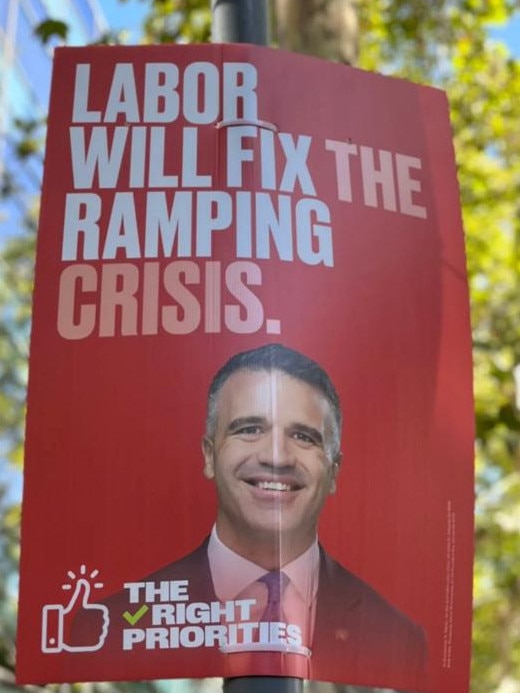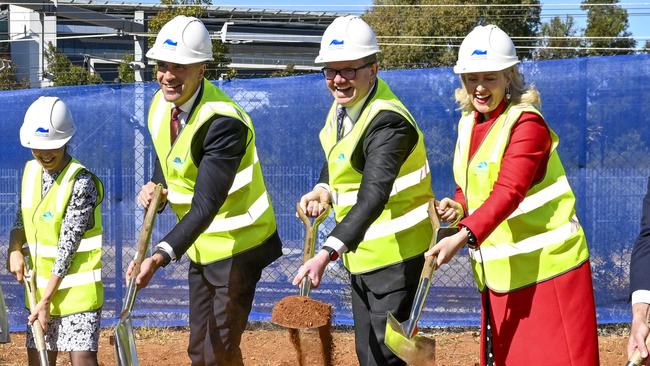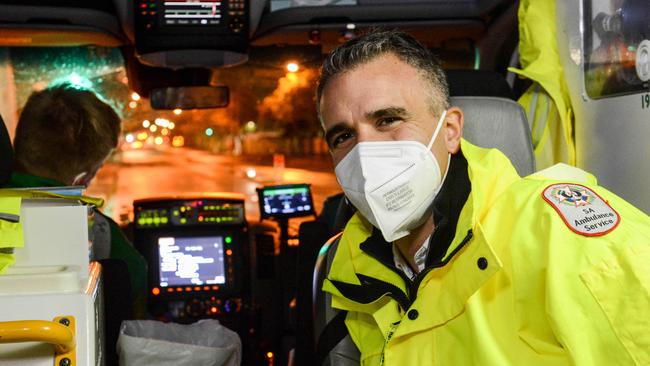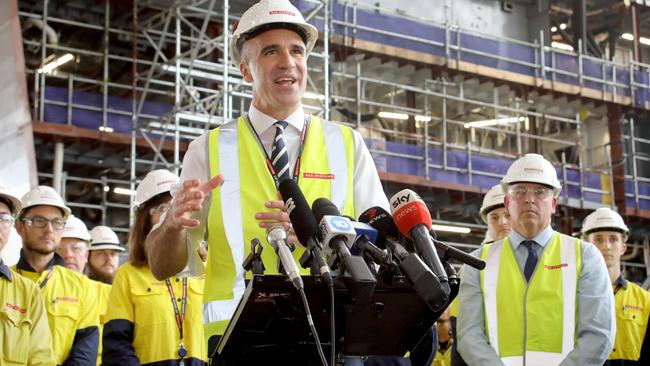Billions spent to tackle ramping with little result for Premier Peter Malinauskas | Paul Starick
Labor has ploughed $7.1bn into fixing ramping but has the money been wasted, asks Paul Starick.
Opinion
Don't miss out on the headlines from Opinion. Followed categories will be added to My News.
Back in the heady days of early 2022, Peter Malinauskas was sweeping to a landslide election victory with “ Labor’s plan for the future”.

This was the headline for his election-day statement, a pitch which argued voters faced a choice between “a fresh and united Labor team with a plan for the future, or a tired and deeply divided Liberal Party”.
The centrepiece of Labor’s plan was to “fix the ramping crisis” – health spending initiatives formed 14 of the 17 points outlined in Mr Malinauskas’s statement.
There were plans for more hospital beds, nurses, doctors, ambos, ambulances and country hospital upgrades – the list went on.
Almost 870 days since the Labor won power on March 19, 2022, the Malinauskas Labor government has ploughed $7.1bn in extra funding for the health system over its first three budgets. There are big questions about the results for all this expenditure of taxpayers’ cash. The health system is considered a bottomless pit for money.
No amount of spending will ever fully iron out problems in such a large bureaucracy.
How is success measured on Labor’s promise to “fix the ramping crisis”? Has ploughing $7.1bn into health benefited the state more than, say, putting that money into education and training for high-skilled jobs of the future?
Ramping remains a serious problem, hospital emergency departments are regularly clogged and SA Health has cancelled more than 820 elective surgeries in the past two months because of an internal code yellow emergency.

The Ambulance Employees Association (AEA), which spearheaded the ramping campaign that propelled Labor into power, has handed the Liberals ammunition by describing Tuesday of last week as “the worst in terms of ramping” and declaring the hospital system has reached “absolute crisis level”.
But the absence of any measurement of achievement on the billions shovelled into health means the unions have emerged as the unofficial arbiters. They will, of course, forever find problems that need funding to fix. Their job is to advocate for better conditions and pay for their members.
One wonders whether Mr Malinauskas and Treasurer Stephen Mullighan, in their private reflections, regret making such an iron-clad promise to “fix the ramping crisis”. They must wonder whether they’ve wasted money and, particularly, whether they could have created more jobs and economic growth.

The pair on Monday trumpeted SA’s “enviable position as the nation’s economic leader”, seizing on a CommSec report ranking the state’s economy number one for the third consecutive time.
At a press conference at Saab Australia, which is recruiting 100 workers in 100 days, Mr Malinauskas said the highly skilled, well-paid and secure positions comprised “the trifecta of the sort of growth we want to see here in South Australia”.
But there are warning signs ahead for the state economy. The CommSec report says Western Australia is in “prime position” to take top spot from SA, which “has lost some momentum recently”.

On the crucial measure of home starts – boosting supply during a housing crisis – SA headed the pack. But this was a tarnished prize – all states were down on the decade average and SA’s decline, 4.6 per cent, was the smallest.
Mr Malinauskas has nominated housing as the key contributor to surging living costs and hiked water bills by $85 annually to fund a $1.5bn water and sewer infrastructure surge to unlock 40,000 home allotments within four years.
An ANZ Stateometer report released in June warned the SA economy was “now facing a slowdown”, saying annual wages growth had peaked, business investment was dragging and the housing market was extremely tight.
The state economy is running out of puff, by some predictions, and the health system remains in crisis.
This again poses the question of whether Labor has made a Faustian bargain on health, sacrificing its core mission of job creation in a futile bid to fulfil a foolish, self-serving ramping promise designed to win an election.





